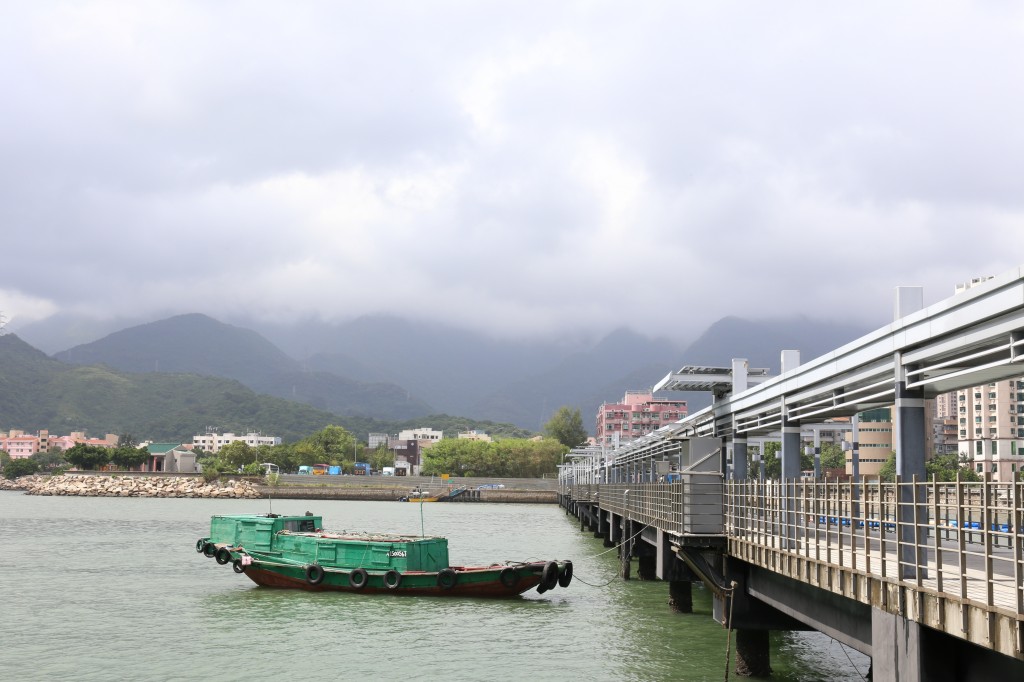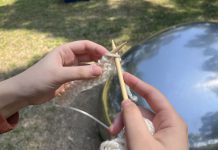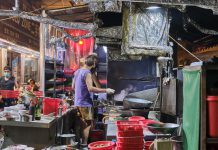Sha Tau Kok District Rural Committee Chairman Benjamin Lee Koon-hung believes Sha Tau Kok could attract mainlanders who only want to shop in Hong Kong. “If Chung Ying Street is enough to satisfy their shopping needs, they don’t need to step into Hong Kong,” Lee says. Meanwhile, he also hopes to develop Sha Tau Kok Market and Chung Ying Street into tourist spots by preserving their historical and cultural features.
Lee says most of the indigenous people, who can trace their ancestry in the area back to 1898, support the opening up of the district.
“Opening up is always better than closing. Who wants to be imprisoned in their residence?” asks Lee. He says there are approximately four times as many non-indigenous residents as there are indigenous villagers because there is a public housing estate- Sha Tau Kok Chuen – in the closed area.
Those who oppose the plan are fishermen and non- indigenous residents. “I could only say they are naïve. As they are not well-educated, their minds are easily affected by others,” Lee says.
However, So Tik-ka, 32, the organiser of a campaign to oppose the opening of Sha Tau Kok, says she and other non-indigenous residents were not consulted or informed of the plan.
“We only knew of the plan through television news but in fact they haven’t asked any of the local residents,” So complains. In March, So set up a stand outside a supermarket to collect signatures against the scheme and says 2,000 people have signed so far.

Bowie Hau Chi-keung, the chairman of the Sheung Shui District Rural Committee admits he did not consult local residents about the opening up of Sha Tau Kok District before submitting the plan.
But he says the development can create business opportunities while having little impact on Hong Kong citizens. Hau says it would also help to curb smuggling activities and imports of illegal goods across Chung Ying Street because customs and police officers would be able to regulate imports at a proper border checkpoint.
Shirley Lo Suet-yan, who lives on the mainland side of Chung Ying Street, disagrees with the opening of Sha Tau Kok. She is annoyed about the problems of parallel trading and thinks the problem would worsen after opening. As it is, she usually gets held up at the control point to the Mainland because there are too many people queuing with their goods.
“The police check us very strictly and I usually collide with the carts,” Lo says. When Varsity visited Chung Ying Street, we were asked by four different people to deliver goods to the Mainland and were offered between Rmb40 and Rmb60 to do so.
Lo worries about the potential disturbance caused by a stream of visitors. “I have lived here for a long time and I really enjoy the quiet and comfortable environment. But it would deteriorate if more tourists come,” she says.
Another local resident, 50-year-old Lee Chor-kwong, who also lives on the mainland side of Chung Ying Street, has a different view. He thinks the economic potential in Sha Tau Kok could be an incentive to improve the community’s ancillary facilities and create more jobs. “Now I have to go to Kowloon for work. If you can have the jobs matched inside the area and find the locals to do the job, it is possible to develop,” says Lee.






































